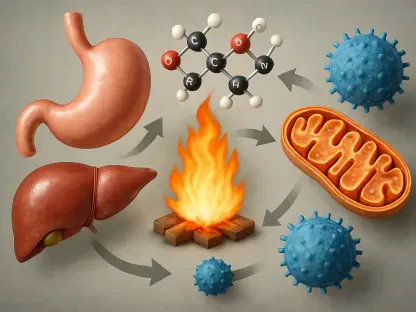In July 2022, a significant foodborne outbreak occurred in Taiyuan, Shanxi Province, China, posing serious public health challenges and prompting swift investigative efforts. The outbreak was linked to the bacterium Salmonella Agona (S. Agona), known for its potential to cause gastrointestinal illnesses. Following a family gathering, several individuals experienced symptoms indicative of food poisoning, such as diarrhea, fever, and abdominal discomfort. This situation necessitated immediate action by local health authorities to identify the source of the outbreak and implement measures to prevent further spread. Employing cutting-edge molecular techniques such as Pulsed-Field Gel Electrophoresis and Whole-Genome Sequencing, investigators sought to trace and understand the origins and progression of this outbreak.
Investigative Measures and Sample Collection
Following the initial report of acute gastroenteritis among individuals in Taiyuan, health authorities embarked on a comprehensive investigation to identify the cause of the outbreak. The process involved collecting and analyzing samples from various sources, including leftover food and environmental samples from a delicatessen, as well as stool samples from affected individuals. Eleven samples were thoroughly examined to ascertain the presence of pathogens, with emphasis on detecting Salmonella species. The technical specifications for identifying these pathogens in food and environmental samples adhered to the National Food Safety Standards of China, ensuring accurate and reliable results.
The investigative team utilized advanced techniques such as Matrix-Assisted Laser Desorption/Ionization Time-of-Flight Mass Spectrometry to pinpoint the specific strains involved. From the samples, researchers isolated two strains of S. Agona from food items and three strains from patient stools. Detailed epidemiological data were gathered, shedding light on the incubation periods and symptomatology of the affected individuals. Such data played a crucial role in understanding the outbreak’s context and dynamics, contributing to efforts aimed at mitigating the risk of future incidents.
Molecular Identification and Analysis
The molecular techniques employed in this investigation were pivotal in confirming the presence of S. Agona and providing insights into its genetic characteristics. Pulsed-Field Gel Electrophoresis (PFGE), a standard method for DNA fingerprinting, revealed identical banding patterns among all five isolated strains, indicative of a single source outbreak. This method, while effective in initial identification, has limitations in distinguishing closely related strains, necessitating more advanced techniques for comprehensive analysis.
Whole-Genome Sequencing (WGS) emerged as a powerful tool in this case, offering high-resolution genetic insights that confirmed the pathogen’s identity as S. Agona. The genomic data obtained enabled researchers to perform a range of analyses, including serotype prediction, resistance gene identification, and phylogenetic studies. These analyses revealed that all isolated strains displayed high genomic similarity, carrying identical resistance genes and exhibiting minimal single nucleotide polymorphism (SNP) variations. The integration of PFGE and WGS results provided a robust framework for understanding the outbreak’s etiology and its potential links to historical strains.
Phylogenetic Insights and Evolutionary Relationships
The phylogenetic analysis conducted using the genomic data from the outbreak and historical S. Agona strains offered valuable insights into the bacterium’s evolutionary history and transmission dynamics. By comparing the core genome sequences of contemporary isolates and those collected in previous outbreaks worldwide, researchers constructed a comprehensive phylogenetic tree. This tree highlighted close genetic relationships between the current outbreak strains and historical lineages from Europe and America, suggesting a common evolutionary origin and possible transmission via food vectors or environmental reservoirs.
These findings underscored the significance of genomic data in unraveling the complexities of pathogen transmission and in tracing the evolutionary paths of infectious agents across different geographical regions and timeframes. Such analyses have far-reaching implications for public health policy and food safety measures, illustrating the necessity for ongoing genomic surveillance to identify potential outbreaks early and prevent their escalation.
Importance and Implications for Public Health
The Salmonella Agona outbreak in Taiyuan highlighted the critical role of advanced molecular tools in modern epidemiological investigations. Techniques like PFGE and WGS proved indispensable for accurately identifying the outbreak’s source and understanding its genetic underpinnings. This incident reinforced the need for strong epidemiological surveillance systems capable of rapidly detecting and responding to foodborne disease outbreaks, thus safeguarding public health.
Moreover, the proliferation of resistance genes and the pathogen’s adaptability emphasize the importance of continuous monitoring and research to anticipate and mitigate potential public health threats. Integrating interdisciplinary approaches, combining traditional epidemiological methods with state-of-the-art molecular technologies, offers the best strategy for managing complex food safety issues in a globalized world where pathogen transmission is not confined by borders.
In summary, the 2022 S. Agona outbreak in China serves as a pertinent reminder of the constant vigilance required to protect communities from foodborne diseases. Continuous advancements in genomic technologies and their strategic application in public health will be instrumental in averting similar outbreaks in the future and in formulating effective prevention and control strategies.









